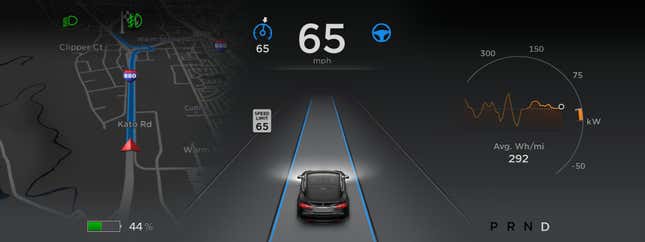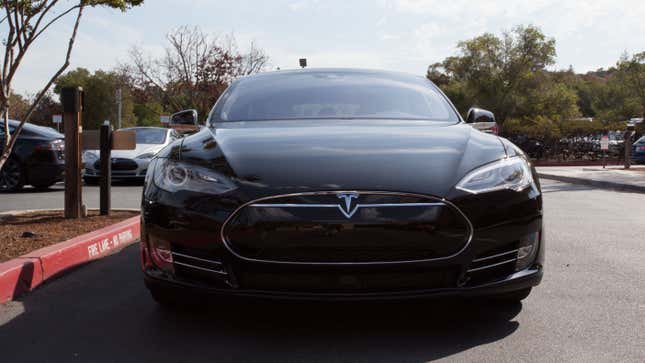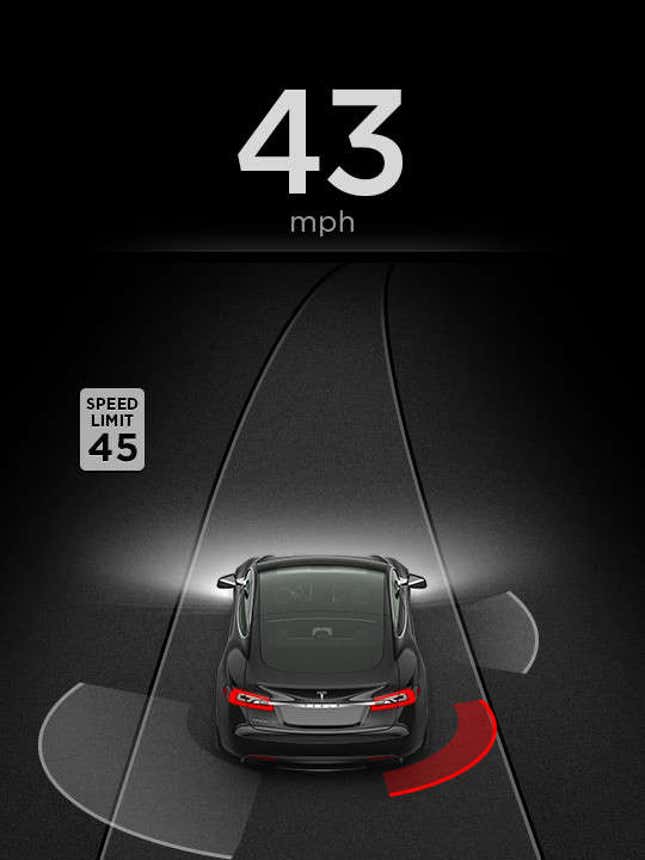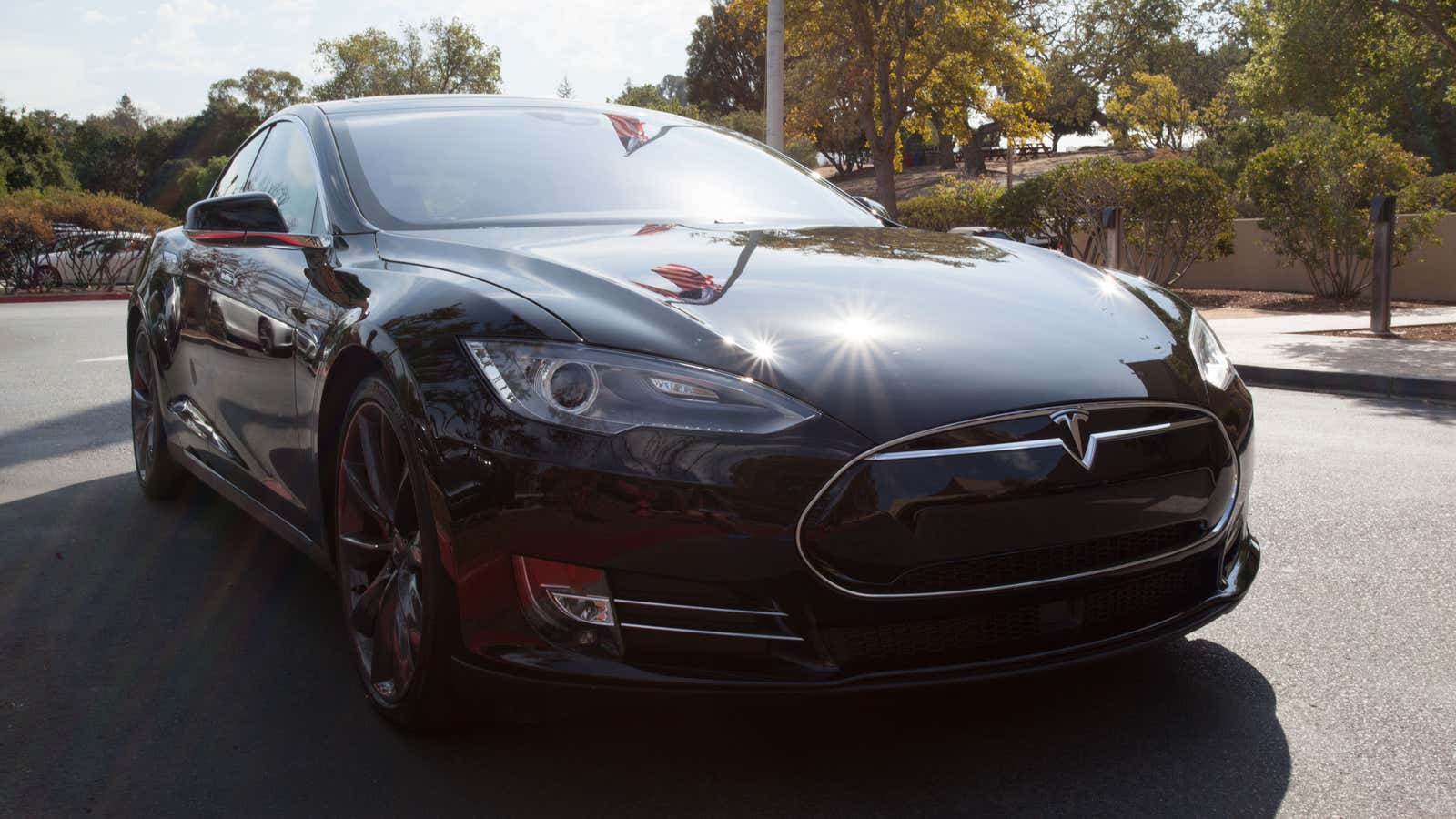The most fun thing about driving a Tesla Model S might be not driving at all. The electric car company has unveiled a new software update that will allow its Model S cars to automatically steer, change lanes, and park on their own.
But don’t call the Model S an autonomous car—it’s not quite there yet, though Musk says his vision is to eventually produce fully driverless cars without steering wheels or pedals. Instead, Tesla is billing the new capabilities as “autopilot” features that will occasionally require hands on the steering wheel.
“We explicitly describe [this software update] as a beta,” Musk said at a press briefing today (Oct. 14) in California. “It’s just important to exercise great caution at this early stage. In the long term, people will not need hands on the wheel—and eventually there won’t be wheels and pedals.”
About 60,000 Model S vehicles will get these autopilot features over the coming week. The update will be downloaded and installed automatically in all Model S cars, but only those sold since September 2014 come standard with the necessary equipment for autopilot mode, including an ultrasonic sensor, front-facing camera, forward radar, and GPS navigation with high-precision digital maps.

In North America, Model S cars will receive the update as soon as tomorrow. Tesla is still awaiting regulatory approval in Europe and Asia, which Musk expects to come within a week.
Here are the new capabilities the Model S will soon have:
Autosteer

How it works: Designed to assist with highway driving, autosteer keeps the Model S in lane, even as the road curves. The driver can turn on the feature when the Model S is traveling at least 18 miles per hour. When autosteer is activated, traffic-aware cruise control will also turn on to maintain a safe distance from the car ahead.
Limitations: The feature doesn’t work when traveling at 90 miles per hour, so you have to choose between driving safe and hands-free, or fast and with steering effort. Every so often, autosteer will ping drivers to remind them to put their hands on the wheel. If the driver fails to do so, the car eventually will come to a stop, at which point, the hazard lights will turn on. The company warns that autosteer does not work reliably on roads with sharp turns or faded, missing, or ambiguous lane markings (as is often the case when there’s road work). Performance also will vary in rainy, snowy, or foggy conditions. The dashboard, however, will alert the driver to take over when necessary.

Auto lane change
How it works: When this feature is turned on, the car will automatically begin changing lanes when the driver activates the turn signal.
Limitations: This feature works only when autosteer is engaged and only for single lane changes, so drivers who want to quickly switch over several lanes will have to engage the feature for each lane change. You won’t change lanes if it detects a car in the next lane over, but the feature is not accident proof—it’s not able to account for cars behind that are speeding in the destination lane, and it will still require drivers to check their blind spots.

Autopark

How it works: Forget those anxieties over street-parking the Model S. With autopark turned on, the instrument panel will show a “P” when a driver pulls ahead of a parking spot. Once the driver shifts to reverse, the car will use its rear camera to monitor its surroundings and parallel park into the spot.
Limitations: Autopark will only kick in if the car detects a curb, so it won’t work when parking on the side of the road (on hiking or camping trips, for example). The car doesn’t distinguish between different colored curbs, and it also won’t curb your wheels for you.
Vehicle hold
How it works: When vehicle hold is turned on, the Model S will continue to engage the brakes even after the driver removes his or her foot from the brake pedal. The feature—a refresh of a feature previously known as hill start assist—is most useful when driving on hills, but it will work on all grades, including flat roads.
Limitations: Tesla warns that drivers should not rely on this as an alternative to putting the vehicle in park.

Side collision warning
How it works: Formerly known as blind spot warning, side collision warning has a larger sensing range to alert drivers to cars and other objects that are close to the side of the Model S. When there are obstacles to the side of the car, the steering wheel will increase resistance. If the Model S anticipates a high likelihood of collision, it will steer away from the objects while staying in the lane; this feature kicks in automatically, even if side collision warning is not activated.
Limitations: It only works when traveling between 20 and 80 miles per hour.
